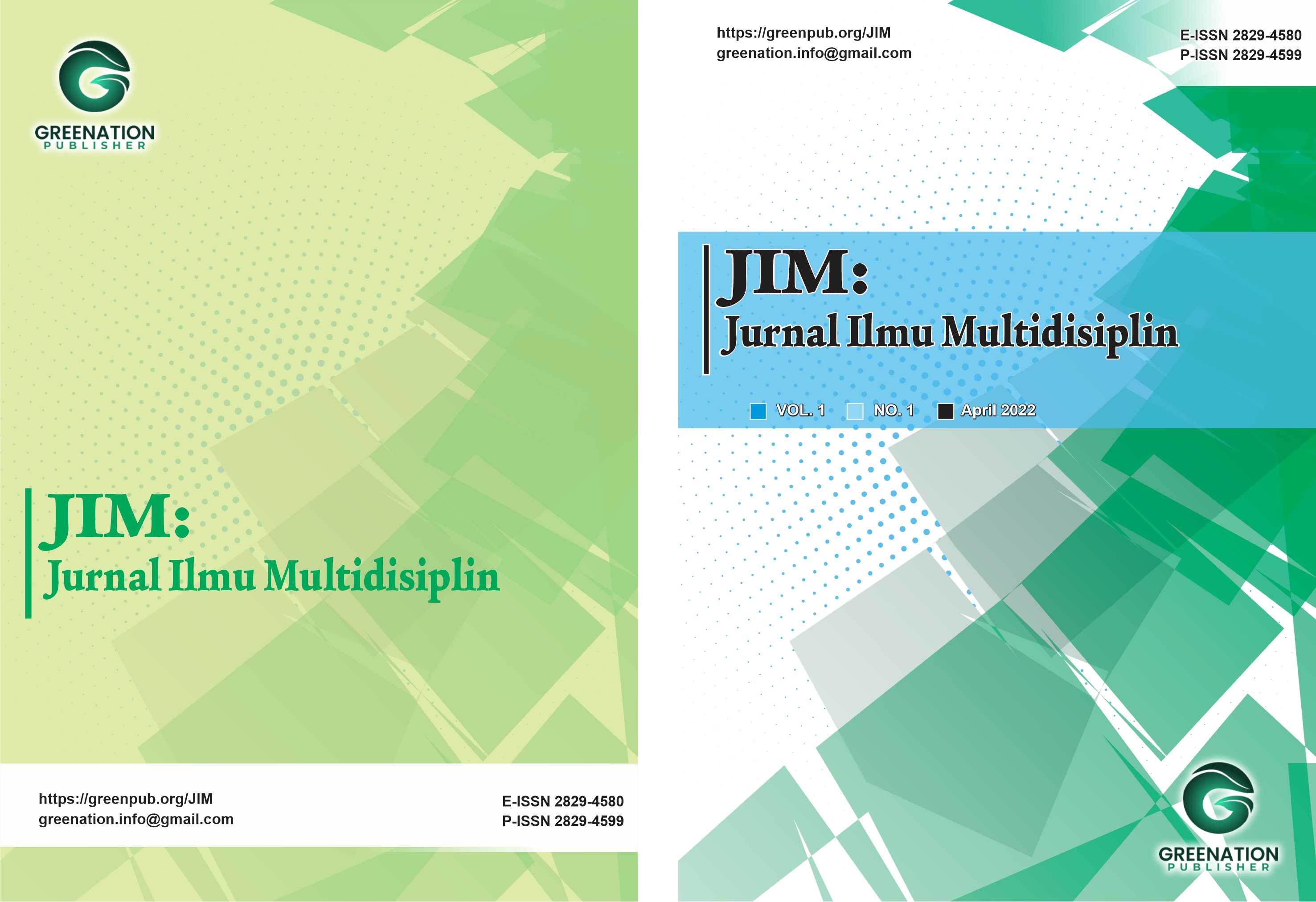Sebuah Laporan Kasus: Pasien Filariasis (Elephantiasis) yang Misdiagnosis
DOI:
https://doi.org/10.38035/jim.v4i1.817Keywords:
Elephantiasis, Filariasis, DiethylcarbamazineAbstract
Filariasis adalah penyakit menular yang disebabkan oleh cacing Filaria sp. yang dapat menyerang kelenjar dan saluran getah bening. Pengobatan spesifik untuk infeksi dilakukan dengan pemberian kombinasi Dietilcarbamazine (DEC) dan doksisiklin. Dalam beberapa kasus, pemberian terapi diethylcarbamazine dapat memberikan efek samping yang beragam kepada penderita. Efek samping itu diakibatkan adanya reaksi imun dari tubuh. Penanganan yang terlambat dikarenakan pengetahuan tentang penyakit ini adalah hal yang akan memperparah keadaan pasien.
References
Amarillo, M., Belizario, V. Y., Sadiang Abay, J. T., Sison, S., & Dayag, A. (2008). Factors associated with the acceptance of mass drug administration for the elimination of lymphatic filariasis in Agusan del Sur, Philippines. Parasites & Vectors, 1(14). https://doi.org/10.1186/1756-3305-1-14
Cabral, S., et al. (2017). Knowledge, attitudes and perceptions regarding lymphatic filariasis: Study on systematic noncompliance with mass drug administration. Revista do Instituto de Medicina Tropical de São Paulo, 59. https://doi.org/10.1590/S1678-9946201759059
Chami, G. F., Kabatereine, N. B., & Tukahebwa, E. M. (2019). Profiling the best performing community medicine distributors for mass drug administration: A comprehensive, data-driven analysis of treatment for schistosomiasis, lymphatic filariasis, and soil-transmitted helminths in Uganda. BMC Medicine, 17, 69. https://doi.org/10.1186/s12916-019-1303-1
Departemen Kesehatan RI. (2009). Pedoman penanggulangan kejadian ikutan pasca pengobatan filariasis. Direktorat Jenderal PP & PL, Departemen Kesehatan Republik Indonesia.
Dickson, B. F. R., et al. (2018). The prevalence of lymphatic filariasis infection and disease following six rounds of mass drug administration in Mandalay Region, Myanmar. PLoS Neglected Tropical Diseases, 12(7), e0006944. https://doi.org/10.1371/journal.pntd.0006944
Gandahusada, S. (2014). Parasitologi kedokteran. Fakultas Kedokteran Universitas Indonesia.
Herrick, J. A., et al. (2017). Posttreatment reactions after single-dose diethylcarbamazine or ivermectin in subjects with Loa loa infection. Clinical Infectious Diseases, 64(8), 1017–1025. https://doi.org/10.1093/cid/cix025
Kamgno, J., et al. (2017). A test-and-not-treat strategy for onchocerciasis in Loa loa endemic areas. The New England Journal of Medicine, 377, 2044–2052. https://doi.org/10.1056/NEJMoa1705026
King, C. L., et al. (2018). A trial of a triple-drug treatment for lymphatic filariasis. The New England Journal of Medicine, 379, 1801–1810. https://doi.org/10.1056/NEJMoa1706854
Molyneux, D. H. (2018). Advancing toward the elimination of lymphatic filariasis. The New England Journal of Medicine, 379, 1871–1872. https://doi.org/10.1056/NEJMe1811217
Morris, C. P., Evans, H., Larsen, S. E., & Mitre, E. (2013). A comprehensive, model-based review of vaccine and repeat infection trials for filariasis. Clinical Microbiology Reviews, 26(3), 381–421. https://doi.org/10.1128/CMR.00002-13
Obeyesekere, I., & De Soysa, N. (1970). 'Primary' pulmonary hypertension, eosinophilia, and filariasis in Ceylon. Heart, 32, 524–536. https://doi.org/10.1136/hrt.32.4.524
Obeyesekere, I., & Peiris, D. (1974). Pulmonary hypertension and filariasis. Heart, 36, 676–681. https://doi.org/10.1136/hrt.36.7.676
Santoso, & Sudomo, M. (2016). Filariasis di Indonesia: Strategi dan tantangan POPM filariasis menuju eliminasi tahun 2020.
Singh, A., Agarwal, L., Lakhmani, K., Sengupta, C., & Singh, R. (2016). Detection of anti-filarial antibody among hydrocele patients living in an endemic area for filariasis. Journal of Family Medicine and Primary Care, 5(3), 553. https://doi.org/10.4103/2249-4863.197309
Soedarto. (2009). Pengobatan penyakit parasit. Sagung Seto.
Specht, S., Suma, T. K., Pedrique, B., & Hoerauf, A. (2019). Elimination of lymphatic filariasis in South East Asia. BMJ, k5198. https://doi.org/10.1136/bmj.k5198
Sudoyo, A., Setiyohadi, B., Alwi, I., Simadibrata, M., & Setiati, S. (2014). Buku ajar ilmu penyakit dalam. Pusat Penerbitan Ilmu Penyakit Dalam FKUI.
Wahyono, T. Y. M., Supali, T., & Purwantyastuti. (2010). Filariasis di Indonesia (Vol. 1). Pusat Data dan Surveilans Epidemiologi Kementerian Kesehatan RI.
Widoyono. (2011). Penyakit tropis: Epidemiologi, penularan, pencegahan, pemberantasannya - Dan perpustakaan terpadu. Erlangga.
Zulkoni, A. (2011). Parasitologi untuk keperawatan, kesehatan masyarakat dan teknik lingkungan. Nuha Medika.
Downloads
Published
How to Cite
Issue
Section
License
Copyright (c) 2025 Dwiana Savitri

This work is licensed under a Creative Commons Attribution 4.0 International License.
You are free to:
- Share— copy and redistribute the material in any medium or format
- Adapt— remix, transform, and build upon the material for any purpose, even commercially.
The licensor cannot revoke these freedoms as long as you follow the license terms.
Under the following terms:
- Attribution— You must give appropriate credit, provide a link to the license, and indicate if changes were made. You may do so in any reasonable manner, but not in any way that suggests the licensor endorses you or your use.
- No additional restrictions— You may not apply legal terms or technological measures that legally restrict others from doing anything the license permits.
Notices:
- You do not have to comply with the license for elements of the material in the public domain or where your use is permitted by an applicable exception or limitation.
- No warranties are given. The license may not give you all of the permissions necessary for your intended use. For example, other rights such as publicity, privacy, or moral rightsmay limit how you use the material.




























